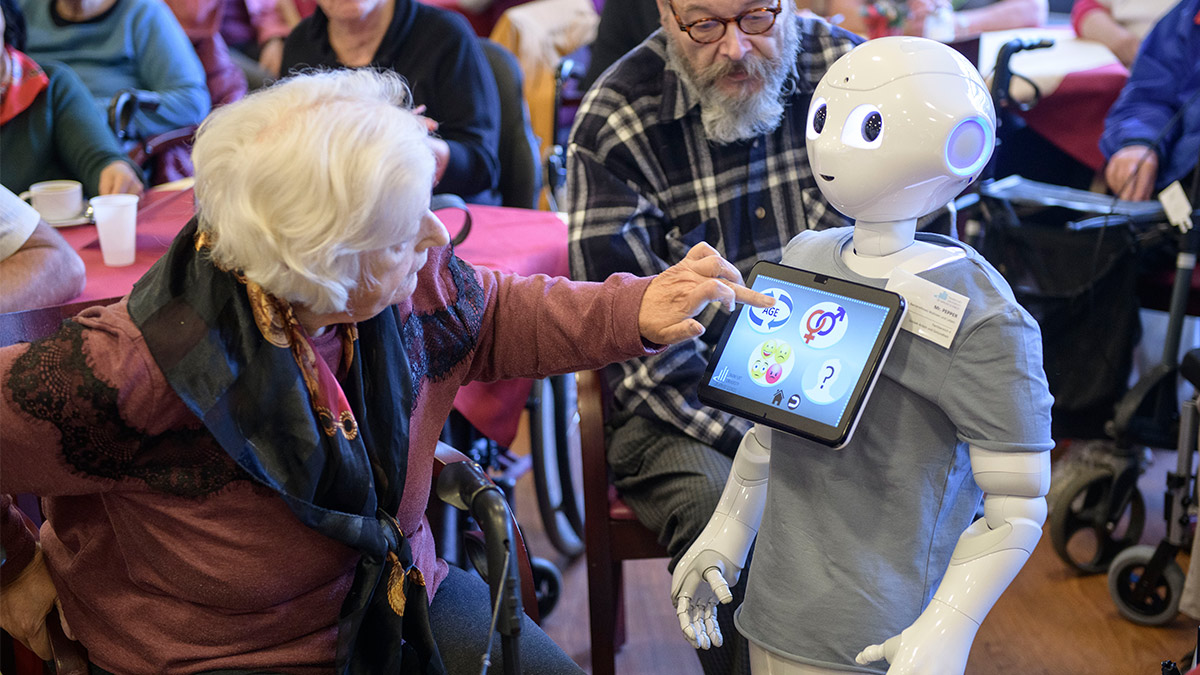Meeting demand for the booming growth in Australia’s aged care sector will require some innovative solutions

An elderly citizens gets to know Pepper, an interactive robot. (Getty Images)
As millions of baby boomers near retirement, the many tailwinds for the aged care sector have been well-documented.
Over the next 15 years, the number of Australians aged over 70 will almost double — to around 4.5 million.
And as the population ages, the number of elderly citizens with dementia is forecast to rise by 88 per cent over the next 20 years.
Not surprisingly, a federal government report released in February highlighted aged care as “one of the fastest growing industries in Australia”.
Along with rapid growth comes plenty of challenges — as evidenced by this year’s Royal Commission, which highlighted some ugly examples of abuse and neglect at residential aged care facilities.
Within those broader themes, it’s worth paying attention to what underlying trends are taking shape.
Public spending on the rise
For one thing, public spending still drives the vast majority of activity in the sector.
Official figures show that total government spending on aged care for the 2017-18 financial year totalled $18.1 billion ($26.3 billion) — a figure expected to increase to $22.2 billion by 2021-22.
And of that $18.1 billion, nearly 70 per cent was allocated towards residential aged care facilities.
There are three ASX companies operating directly in that space — Estia Health (ASX:EHE), Japara Healthcare (ASX:JHC) and Regis Healthcare (ASX:REG).
All three listed publicly in 2014, in response to regulatory changes which significantly increased the allocation of government resources towards the sector.
But the royal commission weighed on the outlook, and the sector is viewed as being wholly dependent on government spending — and thus vulnerable to regulatory changes.
Tech can play a role
At the same time, the need for effective home care solutions is also increasing.
Government data showed public spending towards home care amounted to $4.8 billion in 2017-18, but a research report from Bankwest highlighted that demand is growing at a faster rate.
That trend is creating challenges of its own, such as supply bottlenecks for effective home care packages. According to the Department of Health, the consumer queue for home-care packages numbered more than 100,000 as at September 2017.
However, the Bankwest report also highlighted an opportunity in the sector for tech to play a role in how the industry develops.
The report cited a University of Sydney survey of aged care workers, which found more than two thirds of respondents thought robotics could play a role in boosting patient engagement and reducing isolation in aged care facilities.
And in order to meet rapidly increasing demand for home-care, opportunities exist for aged-care businesses that can work within the regulatory environment to provide safe and effective home monitoring systems that can be produced at scale.
Ultimately, the rapid long-term growth of aged care will mean the need for reduced bottlenecks is only going to increase in the years ahead.
And it’s likely to require a delicate combination of government resources and private sector innovation to meet that demand within a complex regulatory environment.
UNLOCK INSIGHTS
Discover the untold stories of emerging ASX stocks.
Daily news and expert analysis, it's free to subscribe.
By proceeding, you confirm you understand that we handle personal information in accordance with our Privacy Policy.








